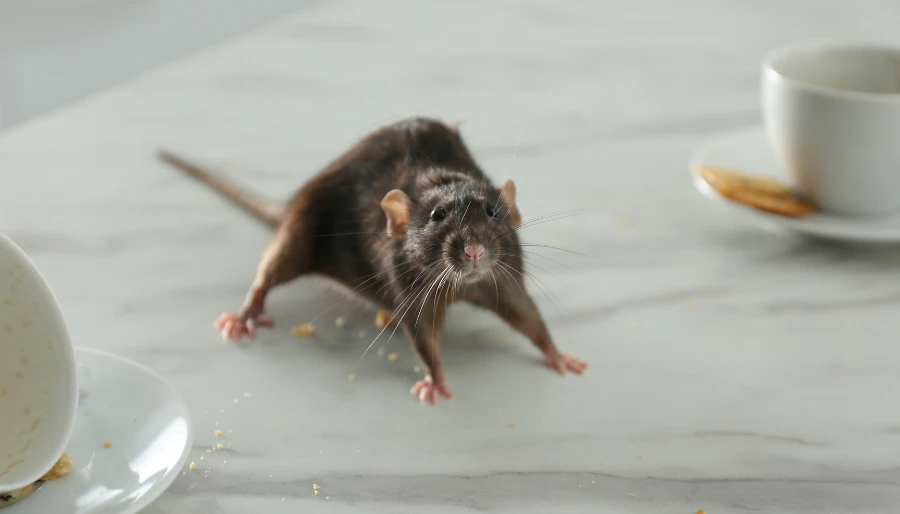Traditional animal farming has long been relied upon to meet human protein needs, but with the projected global population reaching 10 billion by 2050 and limited land resources, it may no longer be a viable method for food production.
However, researchers are now turning to insects as a potential alternative for direct human consumption, as highlighted by a team of experts from West Virginia University’s Davis College of Agriculture, Natural Resources and Design.
Their recent study explores the nutritional and functional properties of protein derived from cricket, locust, and silk worm pupae powders, aiming to develop efficient protein isolation techniques that could revolutionize the food industry.
“We have a patent on a protein isolation procedure,” says Jacek Jaczynski, professor of food science and muscle food safety at West Virginia University. “We use our patented technique to isolate protein, and then we also learn about properties of isolated protein and how it can be potentially used in food for human consumption.”
Meaning, no one can dispute the nutritous nature of insects.
Protein isolation involves the purification and concentration of protein from various sources. Jaczynski explains that it is similar to the process used to obtain whey protein isolate from milk.
By applying their patented technique, the research team is able to selectively isolate proteins from insects, providing valuable insights into their properties and potential applications in human food.
The global demand for sustainable sources of protein has created a shift from traditional sources like meat to other sources that were otherwise overlooked,” explains Kristen Matak, professor of animal and nutritional sciences. “Edible insects and insect flours are promising as meat alternatives because they are typically rich in protein and contain all the essential amino acids.”
To make insects more appealing as a food source, researchers suggest converting them into powder form, similar to the processing of grains into flour.
This method enhances the convenience and shelf life of the insects, making them more palatable for human consumption.
“While consuming insects is widely accepted in many parts of the world, Western cultures view it in a negative light,” says Yong-Lak Park, professor of entomology. “Despite this, most edible terrestrial insects are proven cleaner than crabs, lobsters, and shrimp because they feed on fresh plants and wood instead of carrion.”
As the human population continues to grow, finding alternative protein sources becomes crucial.
Insects offer numerous advantages, including rapid growth, minimal land and water requirements, and simple nutritional needs.
Harvesting insect protein is significantly faster than traditional farm animals, with a harvest cycle of approximately 45 days, compared to four to 36 months for traditional farm animals.
80% of the global human population readily consumes insects, and only Western cultures make up the 20% that do not.
“It’s a minority that doesn’t consume insects,” Jaczynski notes. “As the population grows, we’ll have to feed everyone. I don’t say insects will replace our farm animals, but it’s another alternative that seems more sustainable than what we currently do.”
Certain insect species even produce proteins, such as actin and myosin, that are comparable to those found in pigs and cows.
With over 2,000 insect species identified as safe for human consumption, researchers are focusing on those that are easy to mass produce, such as mealworms and crickets.
The team’s study demonstrates the efficiency of isolating protein from insects using a pH-solubility-precipitation method, resulting in isolates of high nutritional and functional quality.
Protein solubility, which depends on the pH of a solution, allows for selective extraction of nutrients from insects.
“Grains have been around for ages, and they were totally accepted by all populations,” Jaczynski emphasizes. “Why don’t we use insects with the same kind of model on a high level as a source of nutrients? We have to find a way to extract and isolate high-quality nutrients and develop prototypes that will jive well with our taste buds.”
More To Discover
- 10 Reasons Why Passive Houses Are the Future of Energy-Efficient Living
- Shipping Container Buildings Are Trendy For Being Sustainable, Unfortunately, They’re Not That Green
- Self-Healing Leather Alternative from Fungi: Could It Be Mass-Produced for Sustainability?
- Is Vertical Agrivoltaics the Next Big Green Revolution, or Just a Passing Trend? A California Winery Is Going To Find Out
With the impending challenge of feeding a growing population while maintaining sustainability, the exploration of insect protein as a viable solution marks an important step forward in addressing future food demands and promoting a more environmentally friendly approach to nutrition.
Source: West Virginia University


















